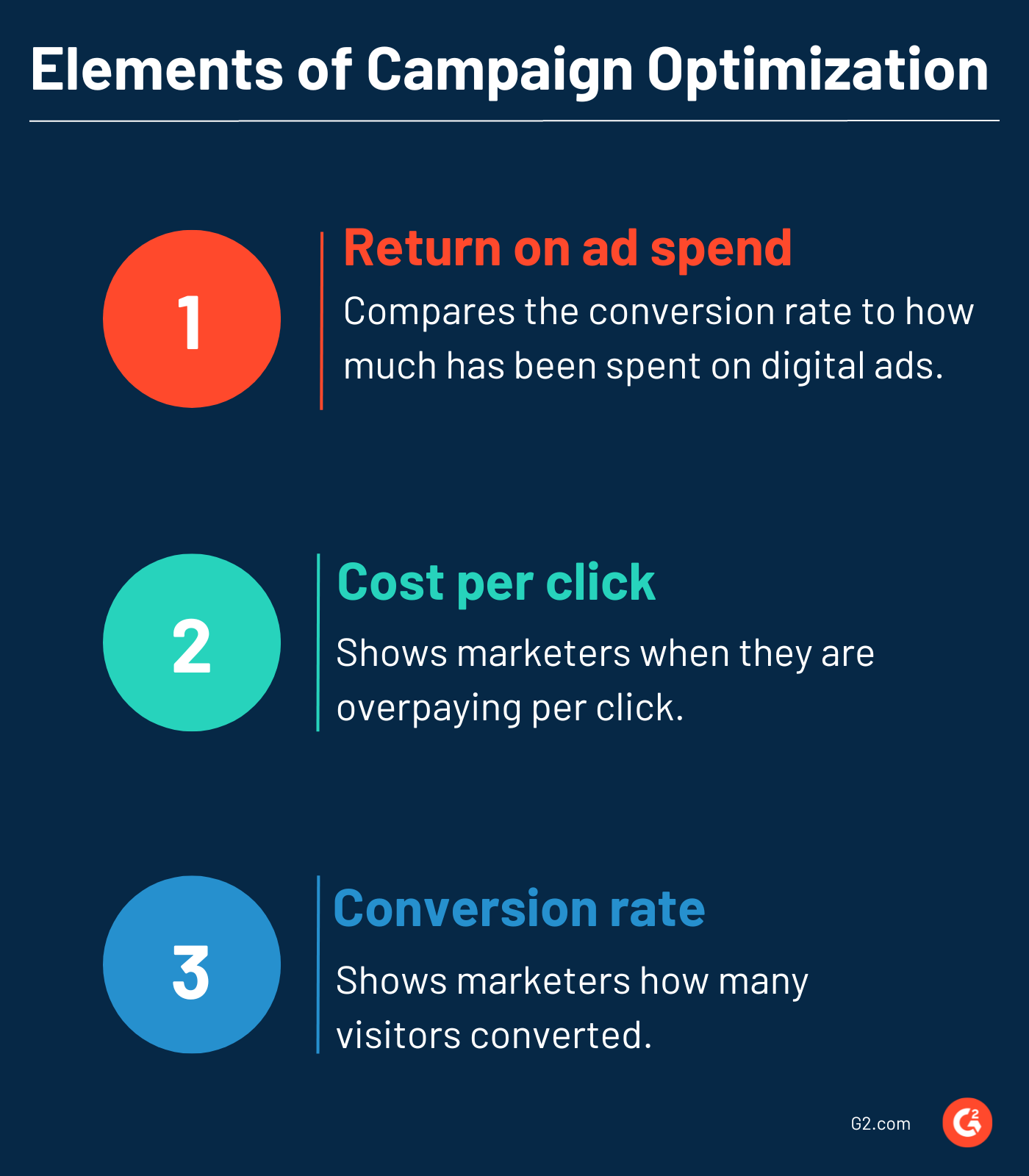What is campaign optimization?
Campaign optimization encompasses all actions by an organization to improve their performance across various digital marketing channels. Ultimately, the goal of this strategy is to increase the return on investment (ROI) for paid digital advertising channels.
Doing so works by identifying specific metrics that show how successful a strategy is, tracking those metrics, and making improvements. This process helps a company spend its ad budget more efficiently by eliminating wasted ad spend and allocating that portion of the budget to high yield strategies. Companies typically utilize digital marketing services to optimize their campaigns to ensure the best chance of success.
Benefits of campaign optimization
Campaign optimization is a way for companies to get the most out of their marketing efforts. After identifying areas for improvement and taking steps to optimize, the following benefits can be expected:
- Drive traffic: By improving ad performance, marketers ultimately drive more users to the company’s landing page. Optimizing campaigns also improves ad ranks, which attracts more relevant site visitors.
- Increase return-on-investment (ROI): The process increases average ROI by reducing wasted spending and increasing campaign performance.
- Develop cost-effective strategies: Some campaigns result in high clicks and vanity metrics but are less cost-effective in the long run. Measures taken through campaign tracking and improved ROI help marketers create cost-effective strategies to become the baseline for future marketing strategies.
- Customer segmentation: When a campaign is fully optimized, it’s possible to discover new customer segments interested in the offer, product, or service.
Basic elements to campaign optimization
Campaign optimization relies on a few key performance indicators (KPIs) that reveal areas for improvement within the organization’s overall marketing strategy.

Relevant KPIs are listed below:
- Return on ad spend (ROAS): This metric shows the conversion rate in comparison to how much money has been spent on digital advertising. As part of proper campaign management, doing so reveals how efficient the company’s marketing efforts are, from beginning to end.
- Cost per click: Tracking this metric shows marketers when they are overpaying per click. Adjusting spending accordingly can improve the campaign’s overall profitability.
- Conversion rate: The conversion rate shows how many visitors actually convert. This number helps marketers identify where and when to adjust the buying process to yield more conversions.
Campaign optimization best practices
Campaign optimization can be accomplished in countless ways. For the best results, start with the following high impact strategies:
- Use negative keywords: When marketers use negative keywords, they can keep their ads from being shown for searches without relevant user intent. Identifying and preventing these irrelevant search terms from pulling up ads optimizes campaign spend and performance. For example, someone selling eyeglasses can add “wine glasses” and “drinking glasses” as negative keywords to deter traffic from users looking for glasses not meant to improve eyesight.
- Use auction insights: After entering negative keywords, auction insights can identify instances where a competitor is outranking the company, sabotaging its click-through rate (CTR) and conversion rate. When this problem is identified and solved, marketers can increase their bids or change their strategy to beat the competitor.
- Test ad copy to increase quality score: Increasing the quality score lowers a company’s cost-per-click (CPC). By testing different ad copy to determine what performs best, marketers can improve their ad relevance and quality score. Quality scores range from 1-10. Marketers should aim for a score between 8-10.
- Make time-dependent bid adjustments: If performance falls significantly at a certain point throughout the week, marketers can cut ads at that time and funnel the extra budget toward higher converting times of the week.

Martha Kendall Custard
Martha Kendall Custard is a former freelance writer for G2. She creates specialized, industry specific content for SaaS and software companies. When she isn't freelance writing for various organizations, she is working on her middle grade WIP or playing with her two kitties, Verbena and Baby Cat.



















